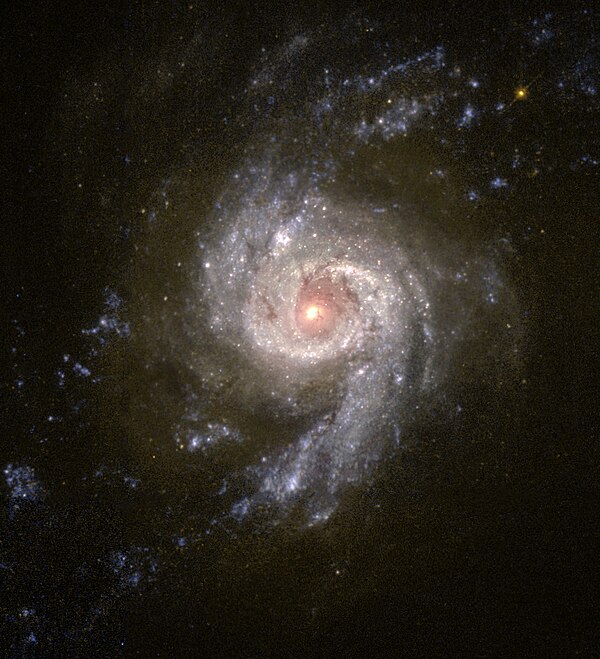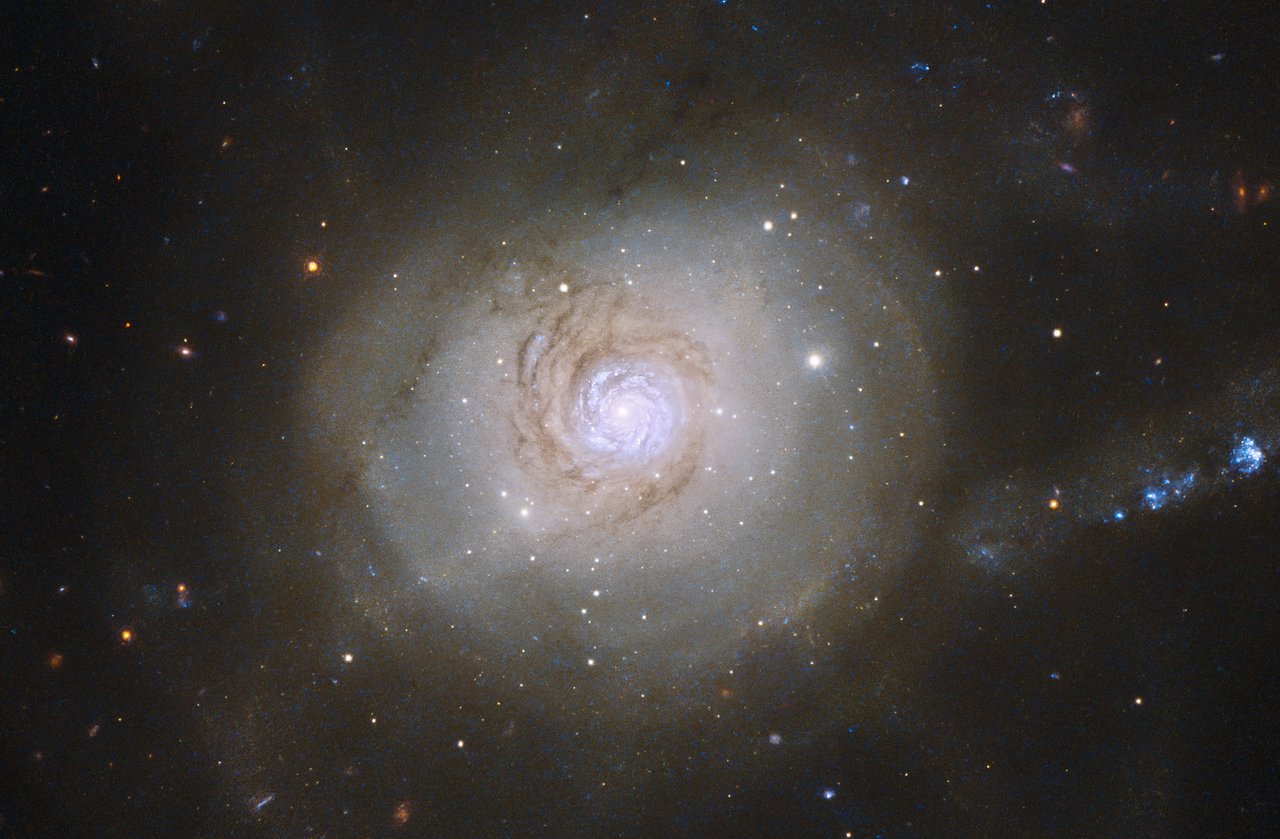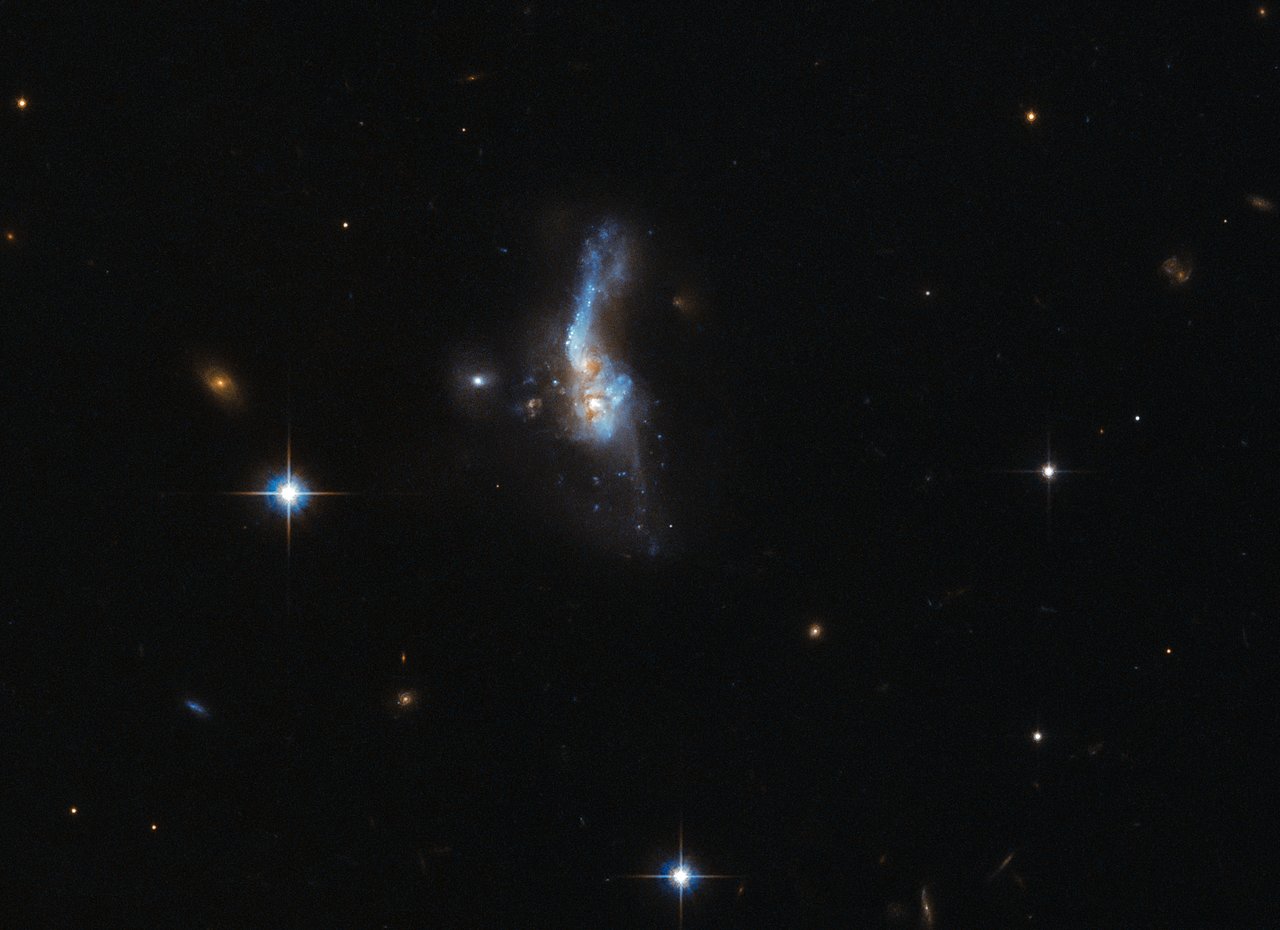Today's APOD is an oldie but goodie!

This galactic pair is a textbook example of what happens when two galaxies collide, and at least one of them is gas-rich.
Let's look at the four most standout features of galaxies NGC 4038 and NGC 4039. Look at the picture at left.
1) This is the nucleus of galaxy NGC 4038. You can tell the nucleus by its
yellow color. The nucleus is also pretty bright and quite centrally located.
2) This is the nucleus of galaxy NGC 4039. Again the nucleus is
yellow. Fascinatingly, the nucleus of NGC 4039 appears to be about as bright and about as big as the nucleus of NGC 4038. This suggests that the two galaxies are of similar mass.
3) This is the contorted arm of NGC 4038, which is chock full of
hot young blue star clusters and
huge pink emission nebulas. NGC 4038 is indeed a starburst galaxy.
4) This is the extremely
dusty "bridge" between the two galaxies. An enormous amount of star formation is going on inside the dust. I have been unable to find out the far infrared magnitude of these galaxies, but my personal guess is that the enormous dust cloud inside them and between them makes them at least second cousins to an ultraluminous infrared galaxy.
So what happens when two gas-poor galaxies collide? Well... not much! Look at the picture at right. Two galaxies without gas have collided, and we get no star clusters, no emission nebulas and no dust clouds.
Everything is uniformly yellow in most gas-poor galaxies. But long tidal tails of old yellow stars have been flung out from the two colliding galaxies IC 1178 and IC 1181.
When two galaxies have collided, what does the more "advanced" merger product look like?
I'm not sure that NGC 3310 at left really
is a merger product, but it looks like it to me. Strong winds seem to sweep through the galaxy, creating a whirlwind-like ring around the nucleus, tattered arms and windblown "streamers" of gas and dust. NGC 3310 is a gas-rich galaxy like NGC 4038, and furious star formation is taking place inside it.
What happens when the dust has settled? NGC 7252 provides one possible answer. This galaxy contains a small "inner spiral", only about 10,000 light-years across. Outside of this small spiral galaxy is a ring of dust with some adjoining tails, and outside this dust ring is a large amorphous disk seemingly consisting of several overlapping smooth shell-like structures with no star formation. We can see a tidal feature at right that clearly contains gas and forms new stars, but otherwise this galaxy appears to have "spent" most of its gas.
Is this what "Milkomeda" will look like, the collision product of the Milky Way and the Andromeda galaxy? Time will tell! Good thing we don't have to be there and watch.

Ann
 The Antennae Galaxies in Collision
The Antennae Galaxies in Collision




